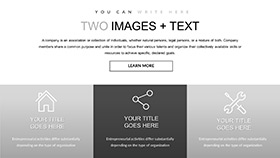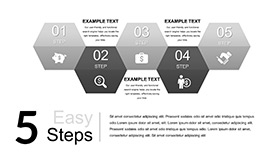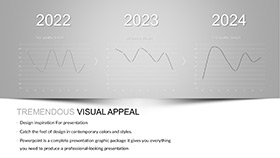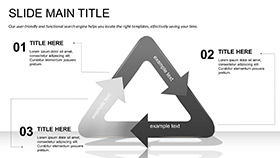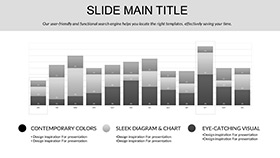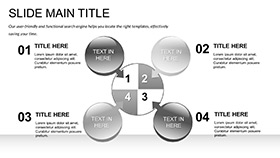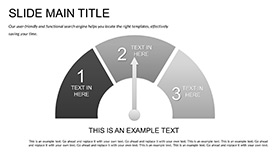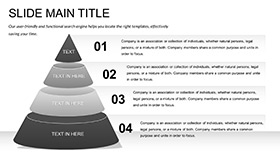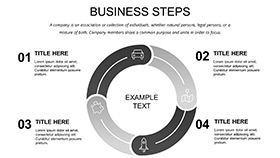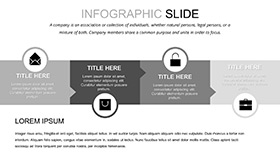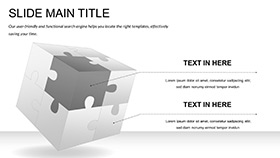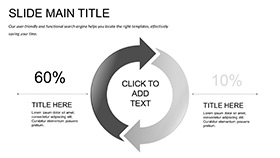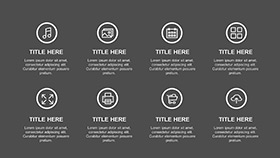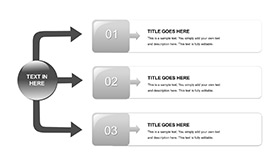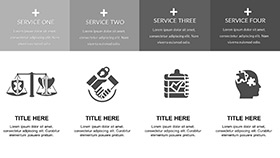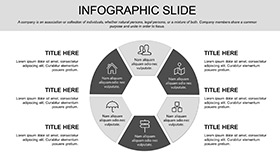From bubbling beakers to intricate molecular bonds, chemistry thrives on visuals that capture the spark of discovery. This Chemistry Poster Keynote template is your go-to for transforming raw experiment data into poster-worthy displays that command attention at conferences or in classrooms. Geared toward scientists and educators who need to posterize findings on reaction kinetics or compound syntheses, it offers 28 diagrams across three masters and seven color schemes, all primed for Keynote's intuitive editing.
Think of unveiling a poster session where your equilibrium diagram (slide 12) balances equations with animated shifts, drawing crowds to discuss Le Chatelier's principle in real time. Or prepping a project showcase for high school labs, where the periodic trends chart on slide 8 trends elements with interactive hovers. The advantages? Effortless scaling for print or digital, consistent aesthetics that elevate amateur sketches to pro levels, and flexibility to iterate as hypotheses evolve. If your current setups feel flat, this template infuses vitality, letting reactions - chemical and conversational - unfold naturally.
Core Components for Poster-Perfect Chemistry Slides
Foundationally, three masters anchor your poster: a header-heavy one for titles and abstracts, a grid-focused for multi-panel data, and a footer-strong for references and QR codes. Three backgrounds ground them - matte grays for industrial vibes, glossy sheens for lab freshness - keeping focus on your chemistry without clutter.
The 28 diagrams are the catalysts: orbital models, titration curves, crystal lattices, each with editable axes and labels. Seven color schemes, from elemental metallics to safety-spectrum rains, ensure your poster pops under gallery lights or screens. In .key/.kth, it's Keynote 2016+ ready, bridging design and delivery.
- Master Anchors: Three to frame poster sections logically.
- Background Grounds: Three to evoke lab authenticity subtly.
- Diagram Catalysts: 28 for reactions, structures, and analytics.
- Scheme Sparks: Seven to highlight hazards or harmonies.
Hands-On Editing: Assembling Your Chemistry Showcase
Fire up Keynote, import, and pick your master - overlay your hypothesis on the intro panel. For a synthesis pathway, slide 5's arrow chain: label steps with reagents, curving paths to show yields. Balance it with the spectrum analyzer on slide 19, plotting absorbance peaks from your spectrometer data.
Lock layers for base grids, freeing you to layer annotations. For posters, export previews at 300 DPI; the vectors hold sharp. Animate equilibria to demo shifts, timing reveals to match narration paces.
- Import and section: Align masters to poster zones.
- Detail diagrams: Inject experiment logs into curves and models.
- Tune tones: Select schemes that accentuate key reactions.
- Embed assets: Place spectrographs in frames for depth.
- Validate: Print test strips to check color fidelity.
Such steps yield posters that not only inform but ignite curiosity.
Versatile Uses: Experiments to Educational Posters
At a regional chem conference, deploy slide 24's mechanism wheel to rotate bond formations, clarifying SN2 inversions for skeptics. Attendees cluster, probes turning to partnerships. In project fairs, the data table on slide 14 tabulates rates, with conditional formatting for outliers - judges note the clarity instantly.
Diagram Deep Dive: From Bonds to Balances
Slides 1-7: Basics - tables and trends for foundational setups.Slides 8-15: Reactions - pathways and profiles for dynamic demos.Slides 16-23: Structures - lattices and orbitals for spatial stories.Slides 24-28: Syntheses - wheels and summaries for holistic views.
These modular pieces remix for custom posters, scaling from A0 behemoths to slide shares.
Expert Hacks for Chemistry Poster Polish
Hyperlink compounds to footnotes for interactive PDFs; click benzene to reveal stability notes. Opt for matte backgrounds in glossy prints to curb glare. Tag alts like "Titration curve showing pH endpoint" for inclusivity. Pare text to bullets, diagrams to stars - let visuals volatilize ideas.
For teams, .kth shares enforce cohesion; merge branches post-review. These practices, drawn from conference vets, make your posters periodic standouts.
Ready to react? Snag this template for $22 and poster your chemistry with precision.
Frequently Asked Questions
How editable are the chemistry diagrams?
Fully - adjust shapes, data, and labels to mirror your exact experiments.
Supports print-ready outputs?
Yes, vectors ensure high-res exports for posters up to A0 size.
Compatible with group editing?
Via .kth files, yes - maintains styles in collaborative Keynote sessions.
Include animation options?
Built-in presets for reactions, like shifting equilibria or bond rotations.
Best for digital or physical posters?
Both - adapts seamlessly with DPI settings and interactive links.









